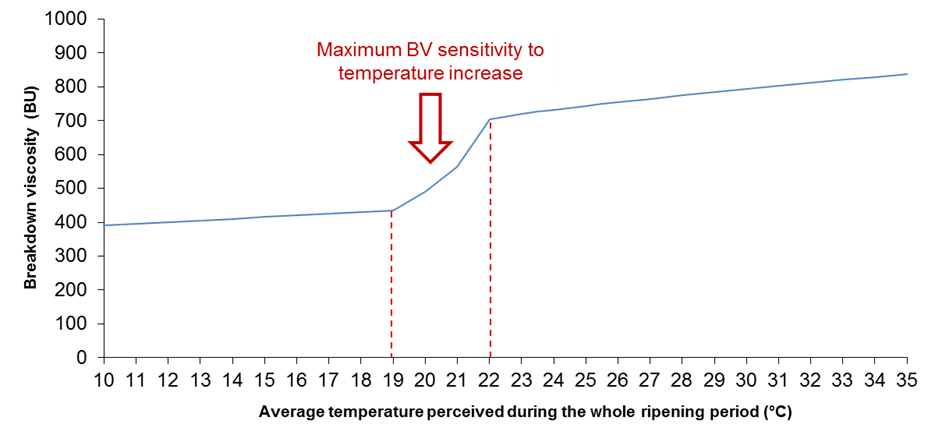This model calculates the Breakdown viscosity (BV) of rice starch as a function of the average air temperature experienced by the crop during the whole ripening period.
The BV value (BU) at maturity (DVS = 3) is calculated as follow (Figure 1):

Where:
BV (BU) is the breakdown viscosity of rice starch at maturity;
BVavg (BU) is a parameter representing the average breakdown viscosity for the simulated rice variety;
Tavg (°C) is the average temperature experienced by the crop during the whole ripening period;
Tmin (°C) is the temperature threshold below which the BV response to temperature is linear;
Tmax (°C) is the temperature threshold beyond which the the rates of BV response to temperature start to decrease with a logarithmic pattern;
ai (5.0261 for Loto variety, 12.94 for Gladio variety; unitless), bi (340 for Loto variety, 300 for Gladio variety; unitless), ci (-123.1532 for Loto variety, 4.6759 for Gladio variety; unitless), di (-0.1992 for Loto variety, -0.2026 for Gladio variety; unitless), ei (0.0002 for Loto variety, 21.655 for Gladio variety; unitless), gi (276.94 for Loto variety, 226.55 for Gladio variety; unitless), mi (-147.98 for Loto variety, -57.307 for Gladio variety; unitless), are coefficients of the equations.

Figure 1. Breakdown viscosity (y-axis; BU) at maturity as function of the average temperature experienced by the rice crop during the whole ripening period (x-axis). The area between the red dotted lines represents the range of maximum viscosity increase due to temperature.
Created with the Personal Edition of HelpNDoc: Free EBook and documentation generator